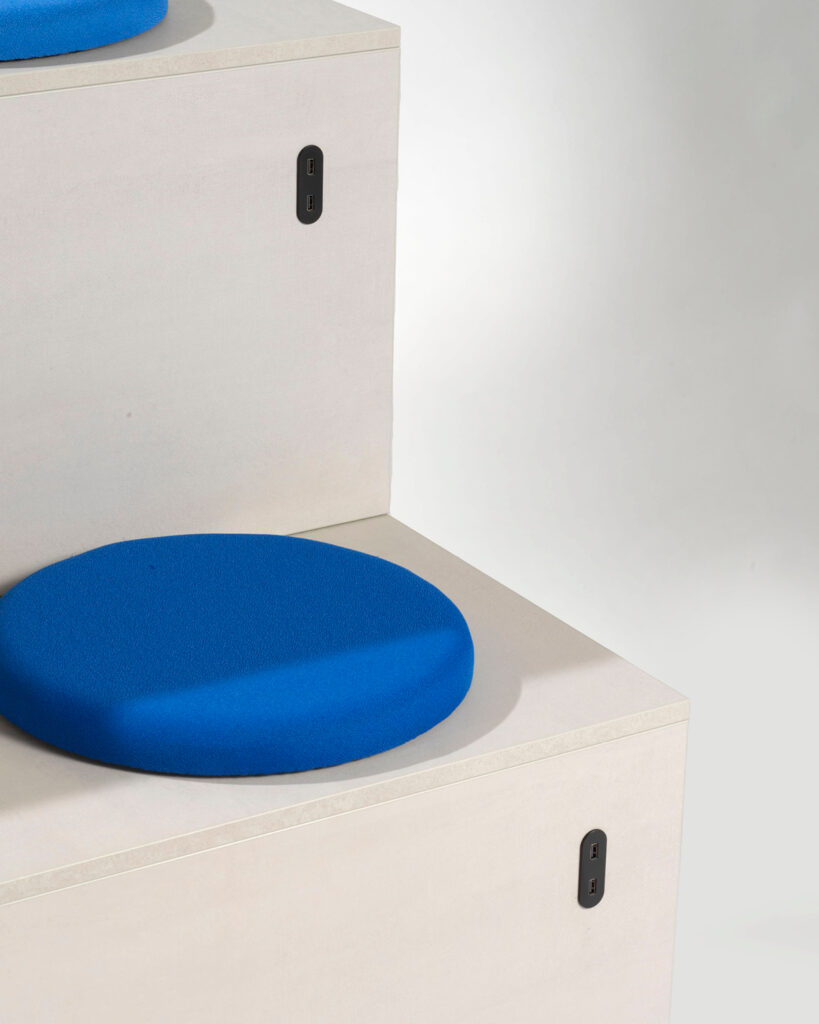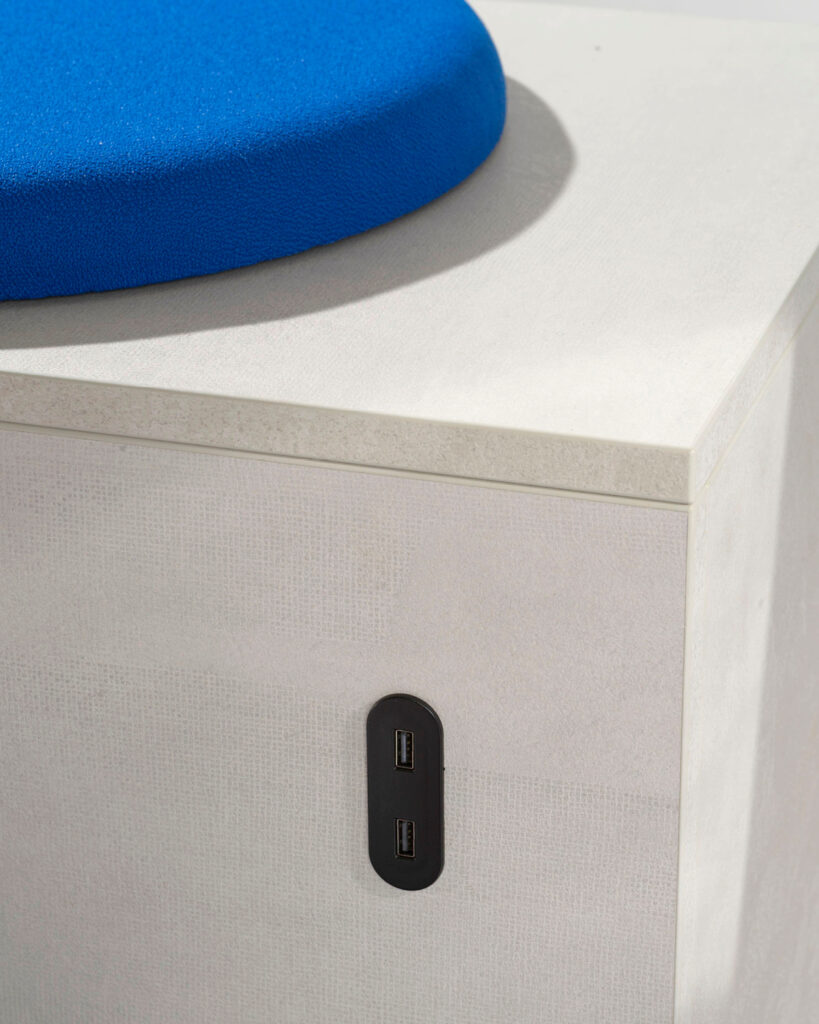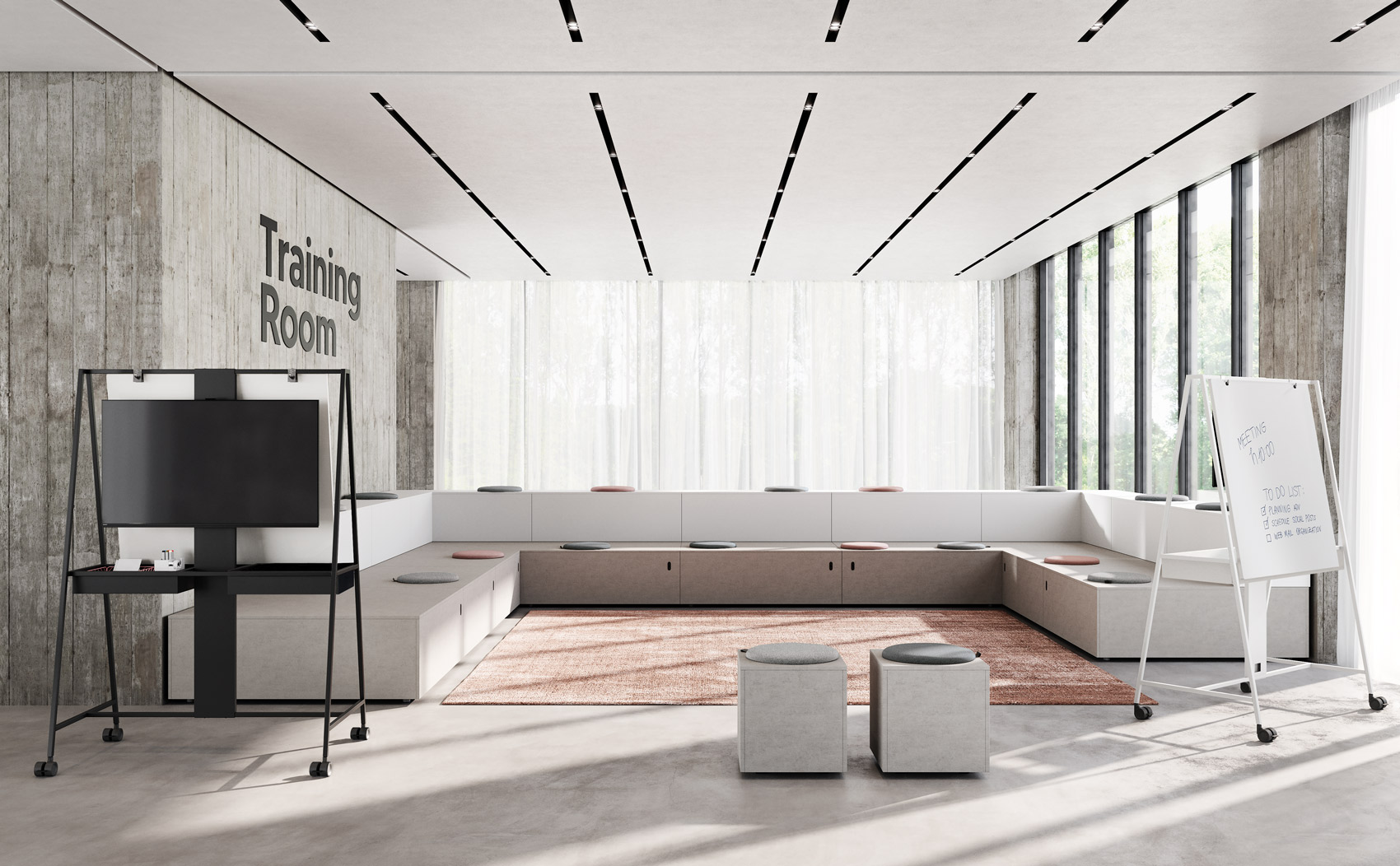If you’re an experienced trainer or the person responsible for training activities in your company, you will know how the environment in which a course is held can make a difference in terms of participant engagement and proactivity. For this reason, we’ve put together five valuable tips for optimising these spaces and the training sessions they host.
1. Comfort and flexibility: reasons why to choose modular furniture
To get the most out of every training session, don’t forget the importance of comfort and space flexibility.
By using modular furniture, ranging from seating to whiteboards, you can quickly adapt the classroom to the needs of the moment and the size of the attending group. Choose tables, chairs and sofas that are easy to move and rearrange them to encourage interaction and collaboration. This approach not only stimulates the active participation of participants, but also allows you to optimise the available space.
Don’t forget functional visual aids such as whiteboards and lcd screens.
2. Space layout style: classroom, lecture hall or “horseshoe”?
The furniture layout in training rooms is crucial to the lesson’s success.
If you want a more traditional lecture, a classroom-style layout with desks and chairs arranged in front rows is ideal. This layout is particularly useful when participants need to take notes or test themselves with exercises that require a computer.
If several speakers are to take turns or if you’re dealing with a frontal lecture that doesn’t require paper or laptops, take inspiration from lecture halls. In this case the seating can be arranged in rows in front of the speaker or in a circle around the speaker.
Alternatively, if you want to create a less formal environment that is conducive to interaction between people, opt for the “horseshoe” layout. This type of layout offers a balance between interaction and focus on the speaker.
3. Fighting distractions: tactical positioning and lighting control
The fight against distractions is a constant challenge in training rooms. Prevent distracted glances out of the window by positioning seating strategically, perhaps with seat backrests facing outwards.
If the position of the windows is likely to create annoying reflections, invest in adjustable curtains or blinds. Maintaining control over these factors can significantly improve participants’ concentration and attention.


4. Technology and connectivity: factors that shouldn’t be underestimated
In the digital era, technology plays a crucial role in training. Make sure your classroom is equipped with enough electrical sockets to power devices such as laptops and projectors or, even better, that you have furniture with USB sockets.
A good Internet connection is equally important, especially if you plan to use online resources during training. Nothing extinguishes the enthusiasm of students (or participants in a meeting) faster than a slow or unreliable connection.
5. Comfort and space: leave some “breathing space”
Make sure that each participant has enough space to sit comfortably and to place his or her belongings. Ensuring that chairs are positioned in such a way that there are no obstacles at the exits can also contribute to an overall sense of comfort and safety.
In conclusion, classroom design plays a key role in successful training. Embrace innovation, benefit from the flexibility of modular furniture and choose the right layout according to the training goals. By eliminating distractions and ensuring the comfort of participants, you will create an environment that favours learning and collaboration. With careful planning and attention to detail, you can create training rooms that inspire, engage and drive participant success.

